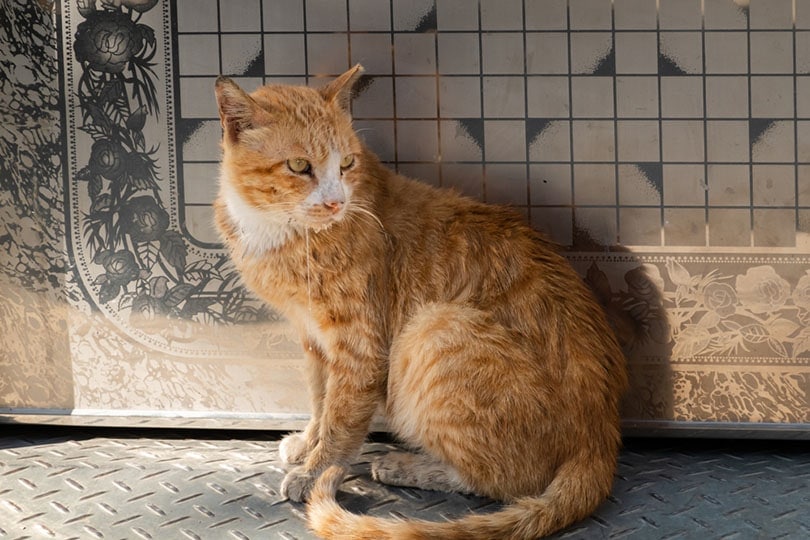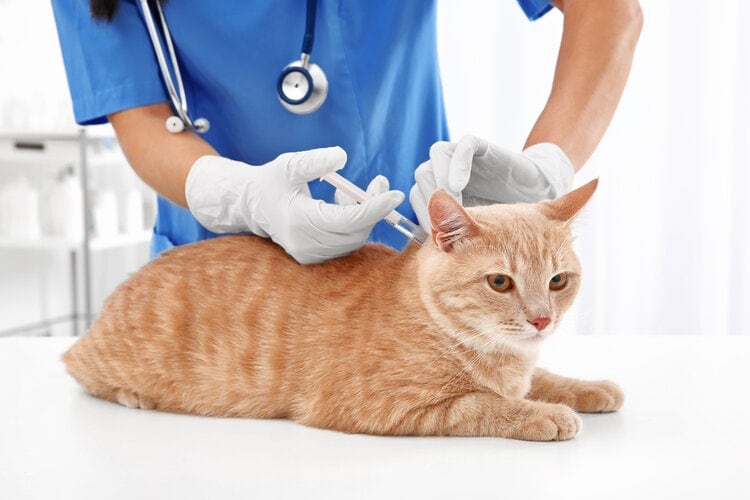How To Tell If Your Cat Is Having a Seizure: Our Vet Explains

Updated on

Click to Skip Ahead
Seizures are one of the most common neurologic disorders of cats, affecting 1%-2% of domestic cats. A seizure is a sudden surge in the electrical activity of the brain resulting in uncontrolled muscular activity, behavioral abnormalities, and altered states of consciousness.
Seizures can have a wide range of clinical signs. Some seizures are obvious to spot, while others are less obvious and may go unnoticed.
Recognizing Seizures In Your Cat
Some cats show a change in behavior hours to days before having a seizure. This is known as the pre-ictal phase. Some of the behavioral changes seen during this phase include aggressiveness, pacing, crying, restlessness, hiding, unusual affection, salivation, frantic running, hissing, growling, and anxiety. These changes are often subtle and easy to miss.
During a seizure, the symptoms will depend on the type of seizure that a cat is having. Seizures are classified into two major categories: generalized or focal.

Generalized Seizures
Generalized seizures affect both sides of the brain. They generally last for approximately one to three minutes. Generalized seizures are usually easier to recognize than focal seizures, but are less common in cats.
- Loss of consciousness
- Shaking
- Convulsions
- Spasms
- Chewing
- Twitching of the facial muscles
- Salivation
- Loss of bladder or bowel control
Focal Seizures
Focal seizures affect only one area of the brain. This type of seizure can be difficult to recognize to the untrained eye and may go unnoticed. Focal seizures can progress to generalized seizures.
- Biting
- Licking
- Obsessive running
- Eyelid or facial twitching
- Excessive vocalization
- Uncharacteristic behavior
- Tail chasing
- Drooling
The period after a seizure is known as the post-ictal phase and may last for seconds to days. During this period, a cat may appear confused and may wander and pace aimlessly. Some cats may be temporarily blind during this period. These changes may be subtle and easy to miss.
A seizure may be a once-off occurrence, or they can occur on a recurring basis. When a cat has recurring seizures it is referred to as epilepsy.

What Causes a Seizure?
A seizure is not a disease in itself but rather a symptom of a disorder affecting the brain.
Seizures are caused by diseases inside the brain (intracranial causes) or outside of the brain (extracranial causes).
Intracranial causes of seizures arise from structural issues within a cat’s brain such as a tumor, head trauma, brain malformation, or infection (encephalitis). Functional issues within the brain caused by a chemical imbalance can also cause seizures.
The most common extracranial causes of seizures include exposure to toxins and poisons, and metabolic diseases such as diabetes, liver, and kidney disease. Some infections such as feline leukemia virus (FeLV), feline immunodeficiency virus (FIV), and feline infectious peritonitis (FIP), can also cause a cat to have seizures.
What Should You Do If Your Cat Has a Seizure?
Although it’s a frightening experience to watch your cat have a seizure, it’s important to stay calm. Do not touch your cat while it’s having a seizure, unless it’s at risk of being injured or falling, in which case you should use a thick blanket or towel to move it to a safe area. A seizing cat may accidentally scratch or bite and can cause serious harm.
Take note of the length of the seizure, and of the signs that your cat showed before, during, and after the seizure. If possible, record the seizure on your phone to show your veterinarian at a later stage. This information can help your veterinarian make a diagnosis.
Most seizures will pass within a few minutes and are not medical emergencies. After the seizure, it is advisable to book an appointment for your cat to be examined by a veterinarian.
If your cat has a continuous seizure that lasts for longer than five minutes or your cat has seizures that occur in clusters with short periods of recovery between each seizure, it is considered a medical emergency and you should seek urgent veterinary attention.
How Are Feline Seizures Diagnosed?
There are many diseases that can cause seizures so a range of tests is often needed to make a final diagnosis. Some of the tests that your veterinarian may want to run include blood tests, urinalysis, blood pressure evaluation, spinal fluid testing, CT scans, or MRIs. The aim of testing is to identify the underlying cause of the seizure in order to determine the correct treatment.
Conclusion
Seizures have a wide range of clinical signs which are easy to spot while others may be subtle and go unnoticed. Seizures are classified as either generalized or focal and symptoms depend on the part of a cat’s brain that is affected. Some cats show behavioral changes before and after a seizure. Filming the seizure and any abnormal behavior that your cat displays, can help your veterinarian make a diagnosis.
- Related Read: What Is the Average Cost of an Overnight Vet Stay?
Featured Image Credit: elwynn, Shutterstock











